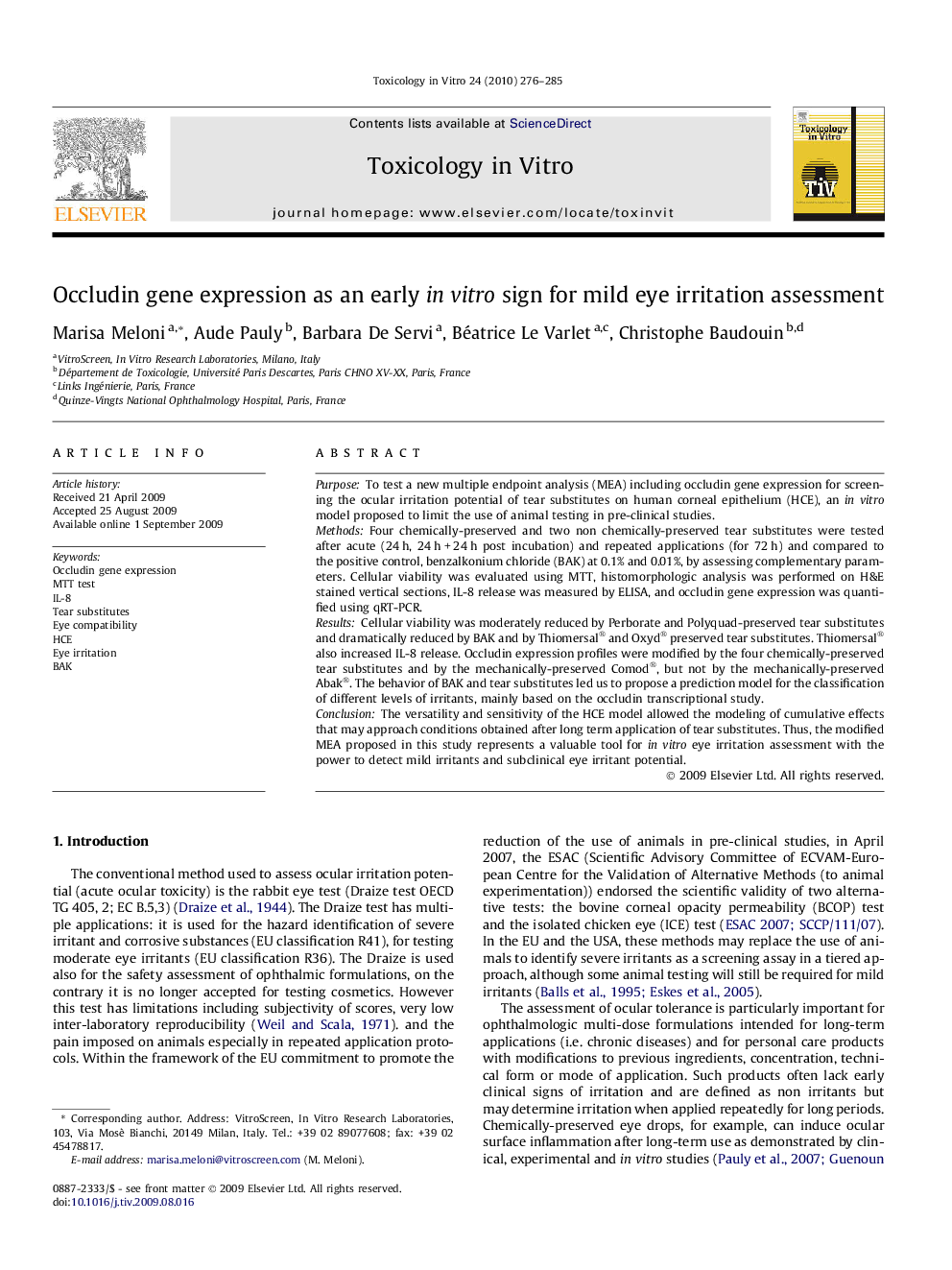| کد مقاله | کد نشریه | سال انتشار | مقاله انگلیسی | نسخه تمام متن |
|---|---|---|---|---|
| 2603554 | 1133823 | 2010 | 10 صفحه PDF | دانلود رایگان |

PurposeTo test a new multiple endpoint analysis (MEA) including occludin gene expression for screening the ocular irritation potential of tear substitutes on human corneal epithelium (HCE), an in vitro model proposed to limit the use of animal testing in pre-clinical studies.MethodsFour chemically-preserved and two non chemically-preserved tear substitutes were tested after acute (24 h, 24 h + 24 h post incubation) and repeated applications (for 72 h) and compared to the positive control, benzalkonium chloride (BAK) at 0.1% and 0.01%, by assessing complementary parameters. Cellular viability was evaluated using MTT, histomorphologic analysis was performed on H&E stained vertical sections, IL-8 release was measured by ELISA, and occludin gene expression was quantified using qRT-PCR.ResultsCellular viability was moderately reduced by Perborate and Polyquad-preserved tear substitutes and dramatically reduced by BAK and by Thiomersal® and Oxyd® preserved tear substitutes. Thiomersal® also increased IL-8 release. Occludin expression profiles were modified by the four chemically-preserved tear substitutes and by the mechanically-preserved Comod®, but not by the mechanically-preserved Abak®. The behavior of BAK and tear substitutes led us to propose a prediction model for the classification of different levels of irritants, mainly based on the occludin transcriptional study.ConclusionThe versatility and sensitivity of the HCE model allowed the modeling of cumulative effects that may approach conditions obtained after long term application of tear substitutes. Thus, the modified MEA proposed in this study represents a valuable tool for in vitro eye irritation assessment with the power to detect mild irritants and subclinical eye irritant potential.
Journal: Toxicology in Vitro - Volume 24, Issue 1, February 2010, Pages 276–285